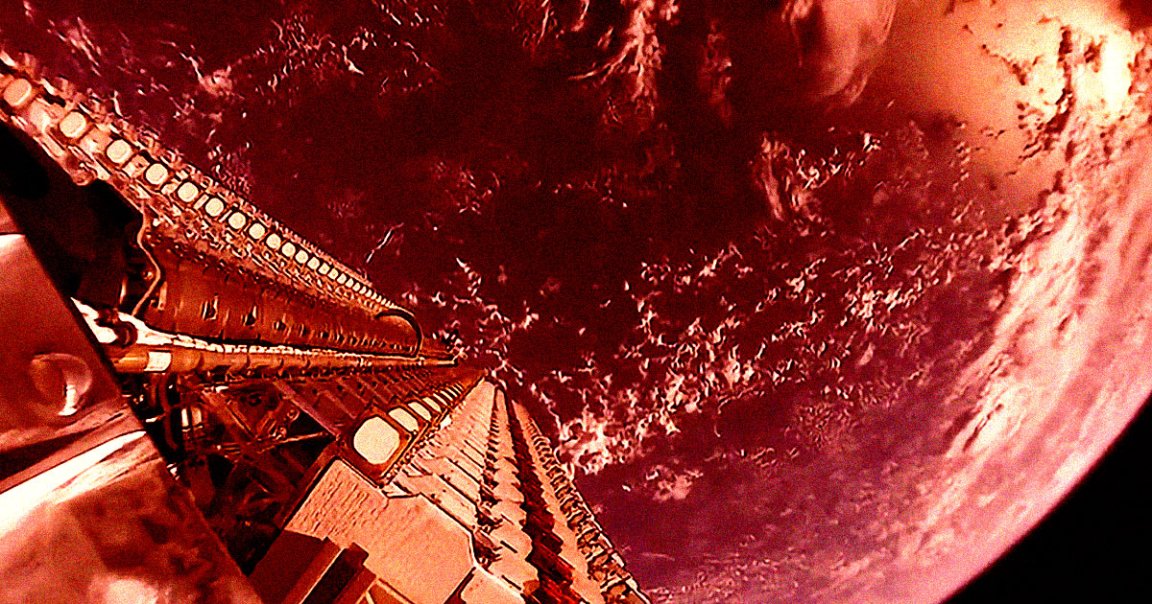
SpaceX has launched over 6,000 Starlink internet satellites into low-Earth orbit, and is planning to bring that total to as many as 42,000 in the upcoming years.
But how exactly their presence in the Earth’s orbit impacts the environment remains a topic of debate.
Regulation hasn’t caught up with commercial entities like SpaceX building out mega-constellations in an increasingly cluttered orbit, as Wired reports, making what happens to these satellites when they’re retired an unknown.
In a new report titled “WasteX: Environmental harms of satellite internet mega-constellations,” sustainability-focused public interest group PIRG is calling on governments to conduct an environmental review to understand the satellites’ impacts.
“We shouldn’t rush forward with launching satellites at this scale without making sure the benefits justify the potential consequences of these new mega-constellations being launched, and then re-entering our atmosphere to burn up and or create debris” the report reads. “This is a new frontier, and we should save ourselves a lot of trouble by making sure we move forward in a way that doesn’t cause major problems for our future.”
While PIRG is singling out SpaceX in the title of its report — the company owns more than half of all active satellites in orbit — it’s not just the Elon Musk-led company looking to build out massive constellations. Earlier this week, China launched the first satellites of its planned “Thousand Sails” constellation, which is designed to directly compete with SpaceX’s Starlink with an array of 15,000 planned satellites.
Amazon is also planning to launch a network of thousands of satellites as part of its Project Kuiper constellation.
But all that metal hundreds of miles above the Earth’s atmosphere could have some unintended consequences. For instance, a study published by researchers from the University of Southern California last month found that satellites could be injecting harmful pollutants such as aluminum oxides into the upper atmosphere as they burn up during reentry.
The satellites could be contributing to “significant ozone depletion,” stopping the atmosphere from healing itself and protecting us from too much UV radiation from the Sun.
SpaceX’s satellites have an estimated five-year shelf life, which means the company will have to constantly send up replacements to keep the lights on. To critics, it’s an incredibly wasteful approach.
“I’ll applaud SpaceX for developing reusable rockets,” University of Texas professor of aerospace engineering and space tracker Moriba Jah told Wired. “But we don’t have reusable satellites. What we launch is equivalent to a single-use plastic.”
“New large scale technologies require oversight and study,” PIRG’s report reads. “The long term effects of this massive change to our environment aren’t clear.”
In response, the US Federal Communications Commission should “coordinate closely” with the Environmental Protection Agency and NASA, among “other national and international regulators to require extensive environmental reviews for the new space age.”
But whether that would be too little too late remains a debate. To Jah, SpaceX is already acting recklessly without considering these risks.
“I think there’s a lot of hubris in saying, look nothing bad has happened yet, so everything is OK,” he told Wired. “Every time we’ve done that, historically, it’s always led to detriment.”
More on Starlink: There Appears to Be a Huge Problem With SpaceX’s Starlink